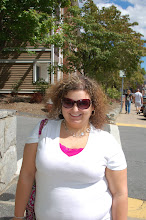June 23-28 I attended a workshop entitled "Crafting Freedom" through the National Endowment for the Humanities. A colleague of mine urged me to apply to an NEH workshop, as she has attended many of them and has always learned so much to bring back to the classroom. I applied back in March and got word that I was invited to attend the second session June 23-28. Excited? Yep! Bonus: the workshop was in Chapel Hill!
I started my trip a little early and headed to Raleigh to spend some much needed quality time with my close friend Ashley. She took the day off and we went to the
outlet malls both in Smithfield and Mebane. We didn't do *too* much damage, but I did get some good deals on some cute clothes for the beach :) It was fun to just hang out and talk and catch up in person as opposed to our weekly chats on the phone and facebook. Sometimes, you just need to interact with a person, you know?
Anyway, our orientation to the workshop was held on Thursday night and then Friday morning we were off and running!
Our first stop was historic Stagville in Durham, NC. Stagville was a plantation that held over 300 slaves. Here is an example of a home where up to 4 families of 8-12 people would live.

Slavery was an ugly institution. However, what we saw at Stagville showed just how large a contribution African Americans made to the plantation life and even its infrastructure. We were shown a mule barn that is believed to have been built by slave labor.

The outside has clearly aged. But the inside of the barn was an amazing example of craftsmanship. Here's a photo of the top of the barn; you can see how it resembles ship construction:

The inside of the barn was by far my favorite part of the trip to Stagville. After lunch, we rode a bus an hour north of Durham to the town of Milton, NC. There, we visited a small church whose pews were crafted by a free black by the name of Thomas Day. In exchange for his work as an artisan, he and his family were allowed to sit in the downstairs congregation with the white members of the church instead of sitting in the balcony with slaves and other blacks. Another cool fact about Thomas Day: he petitioned the NC legislature to allow his wife, Aquila Wilson, to immigrate from Virginia to North Carolina as an exception to a newly enacted slave immigration law. 61 people, including the Attorney General of North Carolina, signed his petition in support, and Aquila was allowed to move to Milton.
example Thomas Day pew
We also visited the Thomas Day furniture museum housed in Union Tavern. The Tavern used to be Day's workshop where he created custom furniture for residents of Milton and beyond.

As you can see, Day's furniture was beautifully constructed using 19th century hand tools. This is just an example of his work; he made everything from cradles and bassinets to full home interiors and even coffins. As one of few free blacks in North Carolina he built a business and personal reputation that transcended the laws that were slowly becoming more and more restrictive and harsh. His is not the only story I want to tell. There is the story of Elizabeth Keckly who worked in the Burwell School, and she is the subject of the second post about NEH.
There is a lot more to see from our trip, so be on the lookout for another post about the Burwell School and my excursion to a Durham Bulls baseball game!




1 comment:
Lindsey, absolutey wonderful information. I have never heard of these places. Slavery was a terrible institution, as you pointed out; however, you showed a different side. Apply for everything you can. I used to go somewhere every summer and loved it. The NSF paid for almost every computer I owned while teaching. I had some wonderful times in U-Wisconsin, National Science Convention-PA, U-Ohio, UNCG, UNCC, NCCAT, et.al. My masters was paid for mainly by these grants. Go for it girl. Hope to see you at Crouse Parade.
Post a Comment